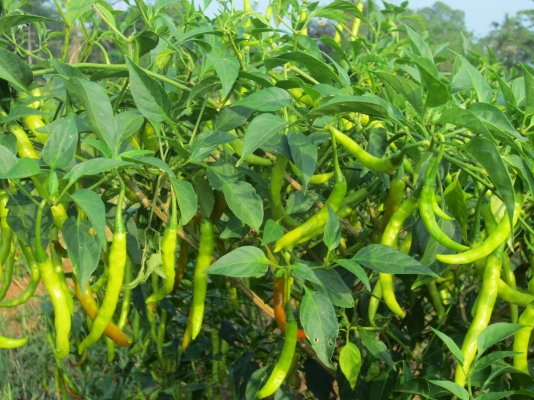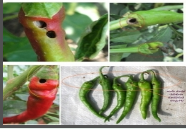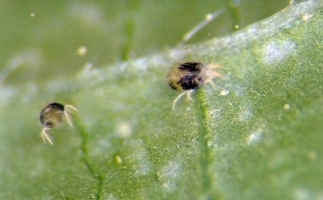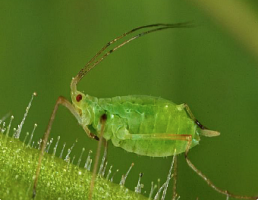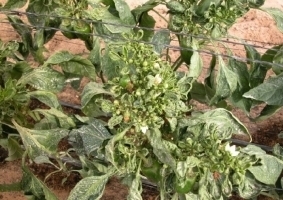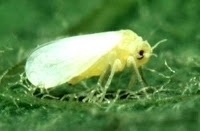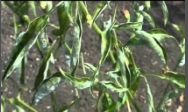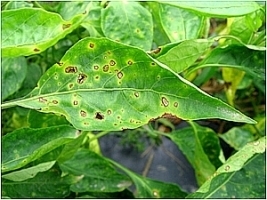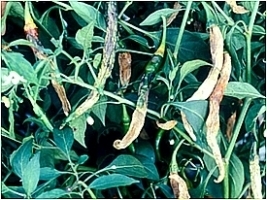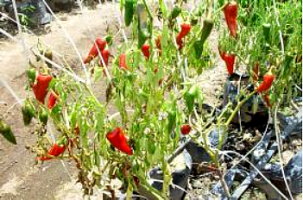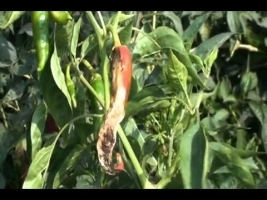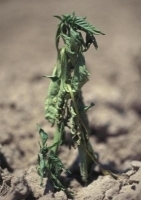Hisar Shakti: Fruits are medium, long. This variety is resistant to fruit rot and powdery mildew. It gives average yield of 68-76 qtl/acre.
Hisar Vijay: Early variety gives resistance to leaf curl mosaic virus, fruit rot and powdery mildew. It gives average yield of 70-76 qtl/acre.
NP-46A: High yielding variety with medium size fruit. It gives average yield of 40 qtl/acre.
Pusa Jwala: Plants are dwarf, bushy, light green. Fruits are 9-10 cm long, light green, highly pungent, fairly tolerant to thrips and mites. Average yield of 85 qtl/acre (green) and 18 qtl/acre (dry).
Pusa Sadabahar: Plants are erect, perennial (2-3 years), 60-80cm tall, fruits are 6-8cm long, born in clusters with 6-14 fruits/cluster, ripe fruits dark red, highly pungent, resistant to CMV, TMV and leaf curl complex, first picking in 75-80 days after transplanting. Average yield of 95 qtl/acre (green) and 20 qtl/acre (dry).
Arka Meghana: High yielding hybrid with resistant to powdery mildew and viruses. Fruits are of length 10.6cm and width 1.2 cm. Fruits are dark green and turn to red on maturity. Gives average yield of 120 qtl/acre green chilly and 25 qtl/acre dry chilly.
Arka Sweta: High yielding hybrid for fresh market. Suitable for cultivation in kharif and rabi seasons under irrigated conditions. Fruits length is 11-12 cm, width 1.2-1.5 cm. They are smooth and medium pungent. Fruits are light green and turn red at maturity. Tolerant to viruses. Yield 135 qtl/acre (fresh) and 23 qtl/acre (dry).
Kashi Early: Plants are tall (100-110 cm height) without nodal pigmentation on dull green stems and bear pendant fruits. Fruits are long (8-9 x 1.0-1.2 cm), attractive, dark green and turn bright red at physiological maturity, pungent with smooth surface. First picking of the green fruits starts at about 45 days after transplanting. Average yield of this hybrid is 105 qtl/acre (red ripe).
Kashi Surkh: Plants are semi determinate (1-1.2 m), erect and nodal pigmentation on stem. Fruits are light green, straight, length 11-12 cm, suitable for green as well as red fruit production. First harvest starts after 55 days of transplanting. Green fruit yield is 105 qtl/acre.
Kashi Anmol: Plants are determinate, dwarf (60-70 cm) with nodal pigmentation on stem and bear green attractive pendant fruits. First picking starts from 55 days after transplanting. It gives average yield of 85 qtl/acre.
Pant C-1: This variety is easily distinguishable from the other varieties because of the fact that it has upright fruiting pods. The pods are highly pungent, relatively small in size, broader at the base and narrow towards the tip. It is moderately resistant to mosaic and leaf curl virus. The green pod yield of this variety is 110 qtl/acre. The dry pod yield is about 20 qtl/acre.
Other States Varieties
Kashi Vishwanath
Sankeshwar: Mild flavor, long and red color variety. It is suitable for export.
Byadgi (Kaddi) : Mild flavor, long and bright red color variety.
Dabbi: Mild flavor, long and thick blackish variety.

